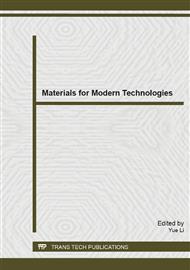p.275
p.285
p.289
p.293
p.305
p.311
p.318
p.323
p.329
Flexural Toughness of Hybrid Fiber Reinforced Concrete under Notched Beam Three-Point Bending
Abstract:
In order to focus on hybrid fiber reinforced concrete flexural toughness,mixed 0.7% steel fiber/0.3% modified polypropylene fiber reinforced concrete, mixed 0.89% steel fiber/0.11% Dura fiber reinforced concrete were chosen to perform flexural toughness test. The test method is giving a central point load to the notched beam specimens (H*B*L1:150mm*150mm*550mm, h1*B1:2mm*25mm) with a 0.2 mm/min loading rate. The load we carry out should not stop until the mid span deflection is more than 3mm.Based on calculating the contribution of the fiber to the energy absorption value Dcr when the concrete cracking,the contribution of the fiber to the energy absorption value D1f when mid-span deflection is δ1,the contribution of the fiber to the energy absorption value D2f when mid-span deflection isδ2 and the equivalent flexural tensile strength feq1,feq2,the effect of the way use to hybrid fiber on the flexural toughness of concrete were investigated. The results shows that the hybrid fiber can significantly improve the flexural toughness of concrete, have favorable deformability and the ability to control crack. The result of 0.7% steel fiber/0.3% modified polypropylene fiber reinforced concrete is shown: Dcr=2185 Nmm,D1f=7634.26 Nmm,D2f=2198.67 Nmm, feq1=4.89 MPa,feq2=2.83 MPa, hence it shows the positive enhancement effect of hybrid fiber and flexural toughness increase significantly.
Info:
Periodical:
Pages:
311-317
Citation:
Online since:
April 2014
Authors:
Price:
Сopyright:
© 2014 Trans Tech Publications Ltd. All Rights Reserved
Share:
Citation:


